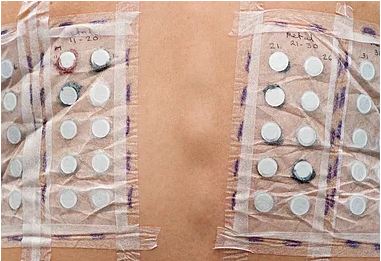Allergic Illness - Conventional Testing Approaches

Skin test. For most people, skin tests are the least expensive way to confirm suspected allergens. There are two types of allergen skin tests. The result of an allergy would demonstrate redness, swelling and itching, and/or a “wheal” or raised round area that looks like a hive, at the test site within 15-20 minutes. Usually, the larger the wheal, the more sensitive you are to the allergen.
- In prick/scratch testing, a small drop of a certain concentration of the possible allergen is placed on the skin, followed by lightly pricking or scratching with a needle through the drop. This type of testing is not as accurate as it uses a SINGLE concentration of a particular allergen for testing.
- In intra-dermal (under the skin) testing, a very small amount of allergen is injected into the outer layer of skin.
The concentration of the allergen used is serially titrated to create a 2mm difference in size of the wheal between one dilution to the next. This is important as the reactivity to certain allergens (food or inhalants) varies within the individual. If only a single dilution is used, and it is below the individual’s threshold, then a false negative will result, whereas, if a single dilution is used and it is far above the threshold, a serious reaction may occur. This is the preferred testing method used by the American Academy of Environmental Medicine (AAEM).
Patch test. This test determines if you have contact dermatitis. Your doctor will place a small amount of a possible allergen on your skin, cover it with a bandage, and check your reaction after 48 hours. If you are allergic to the substance, you should develop a rash.
Blood tests. Allergen blood tests (also called radioallergosorbent tests [RAST], enzyme-linked immunosorbent assays [ELISA], fluorescent allergosorbent tests [FAST], multiple radioallergosorbent tests [MAST], or radioimmunosorbent tests [RIST]) are sometimes used when people have a skin condition or are taking medicines, which interfere with skin testing. A blood sample is taken and sent to a laboratory. The lab adds the allergen to your blood sample, and then measures the amount of antibodies your blood produces to attack the allergens.
You may click on the button below to go back and check out other sections for more information on allergy treatment in Vaughan at the Marsden Centre.